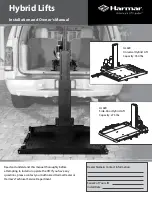
Analog Outputs
5.2 Operating Modes of the D/A-Converters
5.2.1 Data Transfer
Each of the 16 D/A-converters of the VME-DAC1612 has got its own access address. Writing the
data at this address sets the D/A-converters and starts the conversion. The data has to be
transferred word by word, because the conversion is started immediately when the WRITE signal
is cancelled!
Additionally, a mode register can be read in which the setting of the output polarity and the number
of equipped channels can be evaluated. The mode register has already been described in the
chapter ‘Mode Register (J130)’ on page 19.
The D/A-converters evaluate the received data word as follows:
Mode
D15 D14 D13 D12 D11 D10 D9
D8
D7
D6
D5
D4
D3
D2
D1
D0
Little
Endian
x
x
x
x
f
MSB
f
f
f
f
f
f
f
f
f
f
f
LSB
Big
Endian
f
MSB
f
f
f
f
f
f
f
f
f
f
f
LSB
x
x
x
x
Meaning of bits:
D/A-converter data (f f f f .f f f f .f f f f)
Data bit D11 can be inverted for all D/A-converters simultaneously by means of jumper
J300. This is necessary if the outputs are run in bipolar mode, because the D/A-
converters expect the data in various formats, depending on the operating mode:
In
unipolar
operation the data have to be specified in
USB (Unipolar Straight Binary)
format.
In
bipolar
operation the converter expects the data in
BTC (Binary Two's Complement)
format.
NOTICE
The negation is especially important, because the analog outputs will only
be set to 0 V following a RESET, if bit D11 has got the level required for this
operating mode!
In mixed operation of bipolar and unipolar channels on the VME-DAC1612 it is up to
the user to decide which channels are to be set to 0 V after a RESET*.
In the following chapters the voltage values corresponding to the binary data words of
the respective operating mode will be shown.
Page 26 of 50
Manual • Doc. No.: V.1706.21 / Rev. 1.2
VME-DAC1612
















































